Does Mario have a penis?

This article is part of Mario Week, our seven day-long celebration of the 25th anniversary of Super Mario World and 30th anniversary of Super Mario Bros. To read more articles from Mario Week, go here.
///
I first began to think about Mario’s genitals while trying to get the second Green Star in the Boo Moon Galaxy. It’s in World 5, as things start to ramp up, and it was during one of those passages in the final quarter of a Mario game when the great bounding fields of possible movement have been constricted to a tiny walkway, along which the little man must perform perfect leaps and hair-trigger stops, with failure punished by death. In this case, the death is a sort of agonizing melt into a viscous, gray-green goo. The death animation here is uniquely humiliating: Mario writhes, momentarily, before sinking into the abyss. The last thing you see is his little red hat, sinking down just above his gargling, desperate body. I envision him clawing upward at the goo, barely able to move his arms as it seeps into his mouth, his lungs, his eyes. Then the goo laps up over the hat, and he’s gone. There is no “whoopsy daisies!” mugging at the camera here—just domination by the goo.
This cuckolding-by-goo animation reminded me of the artist Jon Rafman’s video “Betamale,” which recontextualizes shitty battlestations, hentai, and low-rent furry porn into a commentary on the way technology, and games in particular, can affect sexuality. After a flurry of particularly depraved anime screenshots, the video opens onto a calm image of a person in a fox costume, wallowing in a pit of mud. “You are again in a dream,” a robot-woman’s voice says, “walking endlessly winding paths, and you can’t find your way out of the maze. You are convinced it’s been created solely for you.” The fox continues sinking in the mud, with cuts to people with lifeless anime masks on preening before the camera. The video cuts back to the fox, who looks plaintively into the camera, sinking further in the mud, a vaguely pleased look plastered to its face. It’s perhaps a jarring mix, especially presented as a sex act, but quicksand fetishism is very much a thing, tracing a connection between the furry, BDSM, and scat porn communities. Among other things, the mud erases the body, sublimates it. (Here is the inevitable Vice documentary on the subject.)
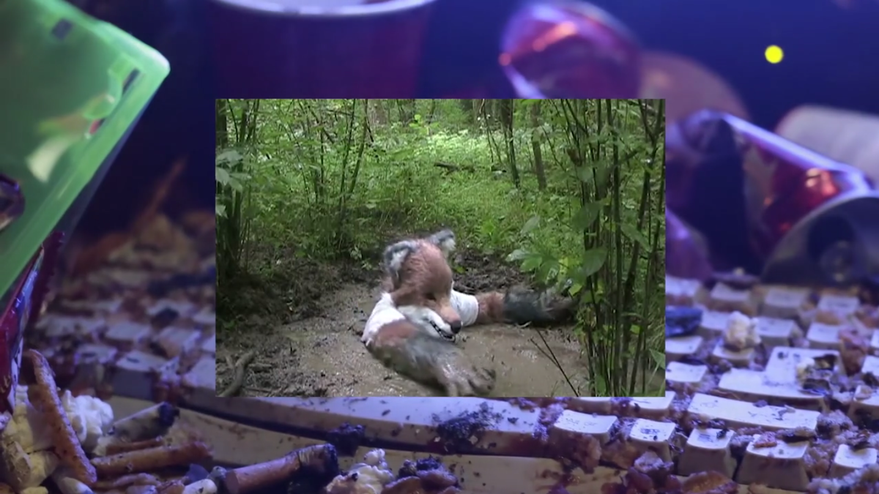
There’s always been something vaguely anthropomorphic about Mario—he’s like a fat little fox made out of marshmallows, except when he’s also a cat—and so, thinking of that fox wallowing in the mud, I got to thinking about Mario’s own sexual capacities. I paused the game and did some googling on what proved to be a sinkhole of a very different sort. A few years ago, there was a rush of attention on Super Hornio Bros., a long-lost two-part porn epic from 1993 starring Ron Jeremy, whose goofball over-acting is actually a pretty good fit for Mario. I know this because, despite Nintendo’s best efforts, there are copies of the movie on YouTube, all of which edit out the portions during which the characters abandon the plot so as to have sex with each other. Like all porn parodies, it’s giggly and stupid and I think mostly for people to giggle about rather than masturbate to, although it is also definitely for people to masturbate to. In its endless self-satisfaction, it feels like it was designed to be a meme, even though it’s from an era when “memes” were still just an arcane communication theory term rather than a marketing tactic. There have been other IRL Mario porns since 1993, all of which lack the high-concept sheen of Super Hornio Bros., opting instead for a purer, people-in-costumes-having-sex vibe.
But let’s not dwell on Super Hornio Bros.: there are an awful lot of other depictions of Mario’s genitalia out there, the vast majority of which are drawings in which Mario acts as a surrogate for the viewer; the real focus of these cartoons is Princess Peach. Some of these drawings are part of grander graphic narratives, male fantasies that repurpose videogame characters from all eras and genres and species into a single “utopian” fuck session. These drawings are troubling, but troubling in a way that is illustrative of the way we think about Mario. It’s fair to say that 100% of them objectify the female characters, sometimes repulsively and sometimes with an almost surreal misunderstanding of human psychology (quote: “I have my clothes but I don’t want to wear them”). There’s a flipside to this Peach-centrism, though, which is a fascinating tendency to only tacitly acknowledge the existence of Mario’s penis. His enjoyment is emphasized—he blushes!—while his anatomy is minimized. Even in the images where he’s having sex with Peach, he’s often portrayed fully clothed—hat on, overalls buttoned, etc.—or else the perspective is slanted to favor a full view of her body and almost none of his. The preferred placement of Mario’s genitals, then, among those concerned with the matter, is either a) inside of his overalls or b) inside of another videogame character’s body. As with the mud, it is nevertheless erased.
“You are convinced it’s been created solely for you.”
I pondered the mystery of Mario’s dick as I tried to get that second Green Star in the Boo Moon Galaxy. I spent a weird amount of time doing this—drowning in the goo, thinking about Mario’s ability to procreate. (There is a Baby Mario, but no baby from Mario, strangely.) Super Mario Galaxy 2 is not the only game that denies to answer the question of Mario’s penis; you could say that _every_ Mario game has pointedly refused to answer the question of its existence, with every character model defined by a smooth, unforthcoming groin area. But Super Mario Galaxy 2 is the only main-series Mario game that, through its very structure, forces the player to ponder such mysteries. In its final stretches it turns meditative in a way no other Mario game has ever quite dared, forcing a zero-ping synchronicity between plumber and player, controller and feet, bounding little man and wholly at-rest body.
///
Super Mario Galaxy 2 was released in 2010, a swift two years after the first Super Mario Galaxy, and it is a game of frankly preposterous, overflowing joy. The first game introduced the concept of tiny planetoids, each a self-contained set of problems or activities, and this conceit allowed the game’s designers to string together levels full of laser-infested, moving Swiss-cheese platforms and long slides through the clouds and floating spheres of water: essentially, everything they thought of. Super Mario Galaxy 2 was originally planned as a mere addition, a clearinghouse for the designers’ surplus of unused concepts from the first game, but the team found that they were producing too much to classify it as such, and so developed it into a full sequel. The result stretches across 49 different levels, each bursting with ideas, from the wide-open pastures full of tiny sparkling fountains and toys to deathly astral expanses of shifting flipboards. In between lie sandstorms, robotics, dadaist dreamscapes, and a bumblebee costume. You send Mario’s doughy little body vaulting through them all, snatching up first 70 stars, in order to unlock entrance to Bowser’s lair, and then, afterward, a remaining 50 stars, the difficulty vaulting up preposterously toward the summit, all in a quest to nab that 120th star and then kill Bowser one final time as Mario’s brother, Luigi.
Except.
After beating Bowser the second time, the game pulls one of the all-time great reveals, in videogames or anywhere else: there are then 120 more stars to get—green, now, but you don’t give a shit—before you unlock the game’s true final level, the Grandmaster Galaxy, an impossible gauntlet that hasn’t even been hinted at in the preceding game’s worth of play. It’s worth noting that this isn’t the collect’em’all mentality that fills many current videogames, which create stunningly detailed cityscapes and then task the player with collecting trinkets in them, or performing similar exercises in a bunch of different locales. Each of the first 120 stars in Super Mario Galaxy 2 is a handcrafted, deeply narrative experience, full of tiny details and amazements. They have more in common with a bespoke suit or a custom McLaren sportscar than a normal videogame task. The details of the journey to get each of the first 120 stars are sources of quiet amazement—good lord, you think to yourself, I’m ice-skating on lava—and so the revelation of 120 additional Green Stars is a sort of preposterous gift to the player, an assurance that the game will just keep rolling on, opening up new vista after new vista. As a feat of game design, it’s remarkably ostentatious, filling a game up to the very top with voluminously varying playgrounds and things to do—and then emptying the bucket out and filling it up all over again.
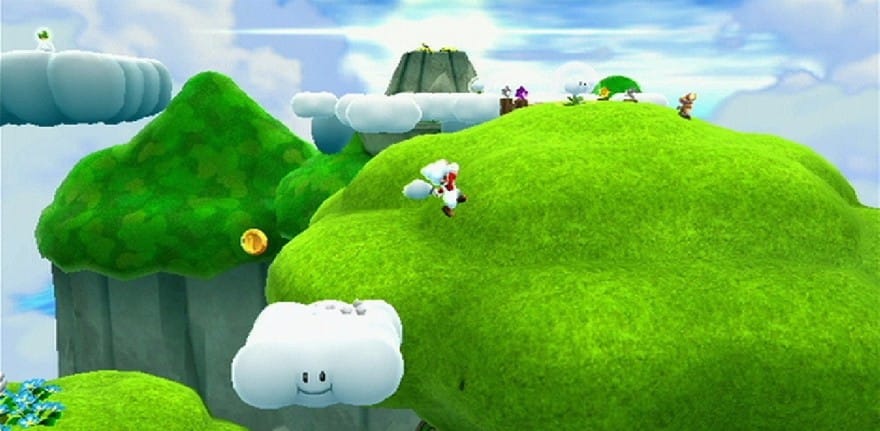
But the Green Stars also operate on a different level, having the feel of an after-hours jam session; they’re looser, weirder, harder and stupider. It’s Stray Cats to the main game’s Nilsson Schmilsson, Wild Honey to the main game’s Pet Sounds. It’s an act of exhaustive creativity. The very second Green Star you collect breaks a fundamental rule that the entire preceding game had held sacrosanct: There are no “puzzles” or moments of pause in the first 120 stars—you always know where to go and what to do, you just struggle to do it. But then there you are, overlooking a white picket fence into the oblivion of space, the Green Star twinkling serenely below you. A great twirling blast portal sits behind you, begging you to advance with the level. And then you ignore it, hopping over that fence, and into the great depths of space.
If you’re lucky, you catch the star, and the level ends. Often you are not, and plummet into a black hole. Each Green Star is a wry inside joke, perverting the structures that had once seemed so purpose-built for Nintendo Fun™ to instead thrill and terrify you in new ways. Jumps that were once mere flourishes, like back-flipping off of Yoshi’s back and then double-jumping at the summit of the dismount, become mandatory tools in your arsenal. You will not guess that this is the case until you are forced to do it. That “Wahoo!” triple jump that requires perfect timing will be done off of erratic, moving platforms. In Space Storm Galaxy, you gingerly toss Mario into space, drifting like Sandra Bullock in Gravity. Later, you will literally fire him from a cannon into the inky depths. Sometimes you’ll fall through the floor; sometimes you’ll wait around, as the level falls apart around you, watching the playground crumble and waiting for your moment to dive into some unknown cranny and grab that twinkling Green star. It’s all build-up to the Grandmaster Galaxy, one final, all-encompassing level which—well, I had some unfinished business with.
///
Eventually it was sort of all I could talk about: I’d stumble into an acquaintance somewhere and, small talk barely initiated, begin to ask their opinion about the existence of Mario’s penis. I’d tell people at parties about the various styles of Mario pornography out there, and their responses would range from vague bemusement to disbelief. Also, obviously, disgust. Some would ask why I cared; nobody had an answer.
But these questions have been asked before. There exists in corners of the internet a mythical .gif of Mickey Mouse pumping holes in swiss cheese with his dick; the image makes the rounds every few years, always accompanied by the same tone of wonder, but it’s actually a bunch of repurposed animations from “Steamboat Willie,” originally rearranged as the cheese-fucking composition on an internet cesspool called b3ta in 2011. (I say “cesspool” with some affection.) The .gif is notable for a lot of reasons, not least among them the cohesiveness of its composition—it tells a surprisingly complete story with great economy—but for our purposes it’s worth noting that we’re to merely infer the presence of Mickey’s penis through its creation of an absence; that is, we know it’s there not because we see it but because we see the hole in the cheese. We glimpse only its negative. The .gif is famous for seemingly proving the existence of Mickey’s penis without outright proving it, which is interesting, because to prove it would only involve drawing it.
to prove it would only involve drawing it
Superman, by name alone, suggests an inquiry into the matter, and inquiries have been made rather extensively in the decades since his creation. I first considered it as a kid watching Kevin Smith’s 1995 movie Mallrats, which gets less funny by the day, but the entirety of the joke was in fact yoinked from sci-fi author Larry Niven’s 1971 essay “Man of Steel, Woman of Kleenex,” which goes into great biological detail not so much on the question of Superman’s ability to procreate but the problems he might have trying to do so with an earthling. There’s an obsessive tenor to its air of scientific inquiry. Further along the spectrum of speculated genital certainty is the fictional character James Bond, who is essentially a big penis in a tuxedo, fucking the global socioeconomic situation aright and leaving a trail of satisfied explosions in his wake. His penis is the subtext of almost every scene in the two-dozen films about him. Tatiana Romanova, in From Russia with Love, confesses, “I think my mouth is too big”; Bond replies, “It’s just the right size … for me, that is.” The viewer slaps his belly and chortles.
In all of these instances the existence of a fictional male character’s genitals is simultaneously insisted upon and merely suggested, although those suggestions are made with varying levels of aggression. (Relatedly, never google “Ronald McDonald penis.”) It is more interesting to ponder the physical realities of Superman having sex than it is to ponder, say, the ability of the sun to imbue a man with x-ray vision in the first place, but nevertheless, year after year, we stare into the voids of these characters’ groins, searching for signs of life.
///
Here is a true story about my relationship with Super Mario Galaxy 2: We used to have these videogame bets. We’d set a due date and some sort of gaming feat that we may not otherwise have made time for, and the stakes would be something like “as much food as I can eat at Chili’s.” This began during a summer when my unemployed roommate declared his intentions to finally beat his favorite game ever, the great Xenogears, which begins brilliantly but stretches on throughout an interminable, almost unplayable second half. He worked diligently for a few weeks at it, and one night I had a missed call from him. The voicemail consisted of a twinkling brand of j-pop that I knew could only be played during the closing credits of a late-90s JRPG. I shook my head and knew that I had been bested.
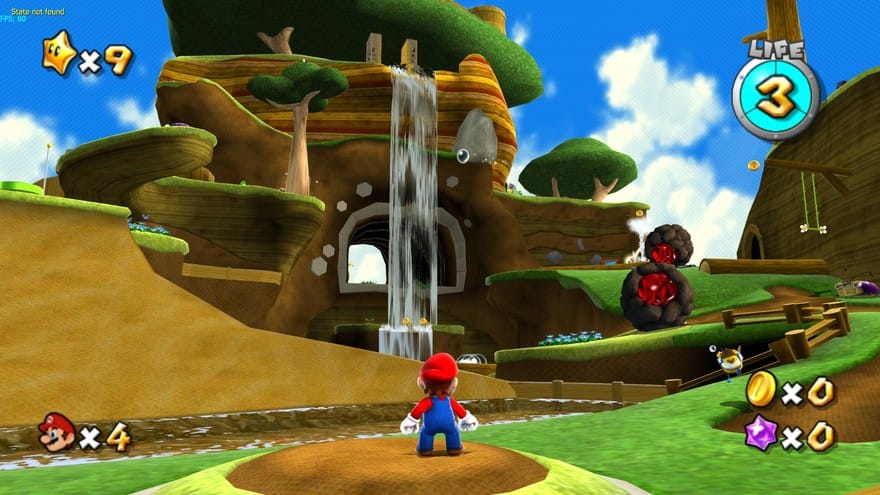
A few years later, a different friend and I engaged in a run to see who could get every star in Super Mario Galaxy 2 shortly after it came out. The loser had to write and record a rap track in honor of the winner. My opponent and I started apace but I confess I was never really in the mix; I was still picking my way through the back-nine of the first set of stars as my opponent raced into the Green Star phase. I spent an angry weekend stuck in my own head, unable to beat the Toy Time Galaxy’s comet challenges, as he delightedly updated me on his progress. When I finally unlocked Luigi and began collecting Green Stars, he was so far ahead of me that I made a listless attempt to collect one, couldn’t quite figure it out, and gave up. The deadline quietly expired and without fanfare I acknowledged defeat. I put some thought into the rap, but days turned into weeks, and I did not deliver. One day I got a voicemail from the winner—it was a full rap, written and performed by him, toasting his own greatness. This was defeat like I had never known.
We have not discussed the Green Star challenge since then. And I did not touch Super Mario Galaxy 2 until I decided, a few weeks ago, to finish what I had started.
///
Eventually you learn the rules: You always hear the twinkle, first off. The Green Star may be way off-screen but you hear a chime and know it is time to start looking. As in Fez, this means that late in the game you find yourself switching to a heretofore-unused first-person perspective quite regularly, sliding, as it were, right into Mario’s head. Another rule: the order the stars are listed in the level-select screen are exact to the order you come across them in the level—so if you’ve found one, but the level-select screen says it was the second of three, you know there is one before and one after that point in the level for you to find still.
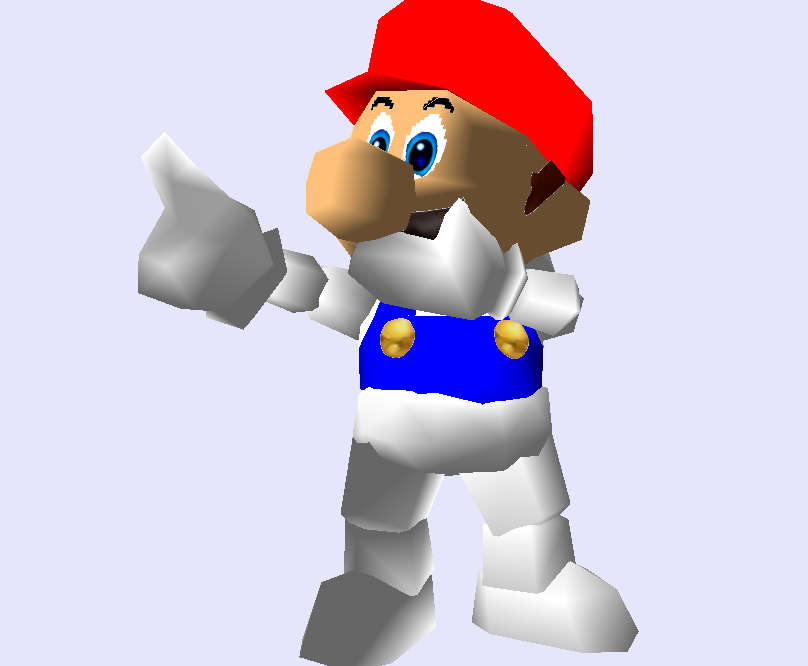
These rules, once realized, lead to a weird thing, then: the Green Stars are not exactly impossible to get. In point of fact, the process is more often sedate. If you are methodical, which I am nothing if not, you find yourself playing a level, hearing a chime, grabbing a star, and then immediately replaying that level. You may play the first ? of a level—dodge the bullet, vault up the thing, hop over the little dog-boy, whatever—five or 10 times in a row. And when you get to where you’re going, on the harder stars, it is more repetition: 10 or 15 attempts of grabbing a Yoshi, eating a chili pepper, blasting up a ramp and flutter-jumping right past the Green Star, to your death. Rinse and repeat. The result is a rhythm unlike maybe any other in games: of endless, easy repetition; long portions of time spent gazing into the pale-blue sky or maroon depths of space; and, finally, more repetition, this time that rare type only created by failing at a very difficult thing a whole bunch of times. If Super Mario Galaxy 2’s first 120 stars recreate an endless amusement park in structure, each planetoid offering a suite of amazements and bemusements egging you ever-onward, then the Green Star challenge is like revisiting that theme-park as an adult, after-hours, on whatever handful of drugs your urban-ex buddies handed you. You stumble around and remember the rides you rode as a kid. You stop and think, for a long time, gazing at the expanse of steel and wood, constructed only to amuse someone who is not you. You look at the ride and choose, instead, to look into the edges, the lawnscaping around the ride, to then break into the old-timey saloon and see if the beer taps are still turned on. You make your own game, hopping around on picnic tables.
What unites both experiences is, of course, Mario: whose skin you slip back into easy as the key turns the lock. The buoyancy of his jump is, at this point, one of those game-design koans as worthy and trite to marvel over as, say, Scorcese’s editing is in film criticism. Of course the jump is great, but how nimble is each step, how instantaneous each pivot? Wielding an old Wii-mote for the first time in years feels weird—I have to point this thing? at the screen?—but then you find yourself lazily shaking it to watch Mario spiral inevitably into a figure-skate, of course performing a double-axel with each jump and cutting the blade right back into the ice, right where you wanted it to land. You loll on the couch, barely sentient IRL, but performing back-flips and dismounts on-screen that are engineered to defy logic. You perform the same logic-defying jumps, again and again, perfectly each time; you fuck one up then slide off the wall into a double-jump off a nearby enemy, keeping the run going, and you would shake your head in disbelief but you are not moving. The stupor builds on itself. You let it. You barely move a muscle as Mario leaps up a pit of hell to backflip and twist into a cloud.
I beat the Grandmaster Galaxy over waffles one morning, at which point, of course, the game challenged me to beat it again, this time without getting hit once. Doing so was not the hardest thing I’ve ever done, but it was the stupidest thing I’ve ever done that was that hard. I did not do it because I lost the bet long ago, and somehow still owed it to a friend. That was what I thought before the challenge. In the end I did it because Mario deserved it, after all we’d been through. The reward for the Green Star Challenge is not victory but oneness. It sheds any semblance of story or even aesthetic razzle-dazzle, and so becomes time spent not in Mario’s levels but in Mario, seeing as him, moving as him, thinking as him.
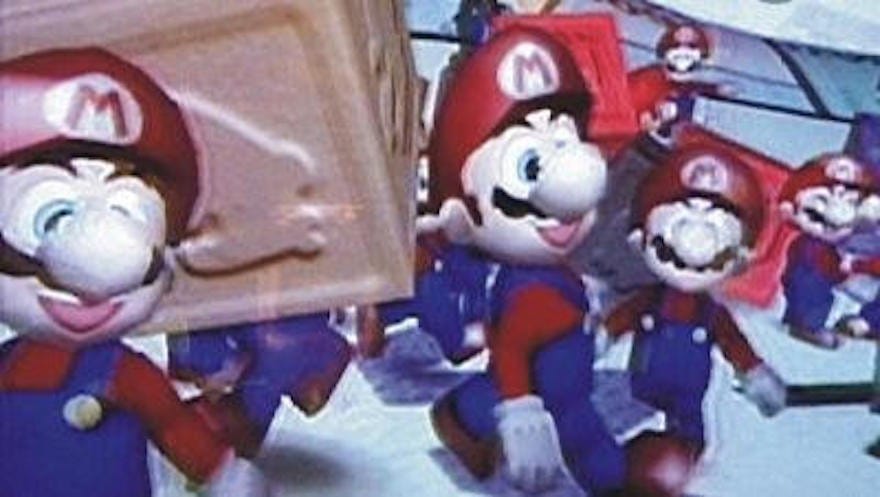
Which is to say this: Mario both does and does not have a penis. Just as The Sopranos ended with a metaphor for uncertainty, and so maintained the possibility of both Tony Soprano’s death and a life spent in fear, so must the question of Mario’s penis remain uncertain. Those pornographers that frame his penis so questionably are getting at the essence of the matter in a way Super Hornio Bros., giggling all the way, never will: the penis must remain a question to be answered only by the viewer, or the player. If the very purpose of a Mario game is a symbiosis with its star; if he is the synecdoche of the player, his movements laser-guided to be what that player wants them to be; if his fundamental goodness is intended as a belief in the goodness and courage within all people—then the existence of his penis only matters insomuch as it does to the body of the player. To answer the question: When you unbutton Mario’s overalls, what do you see? I see another pair of overalls, layered on top of another pair of overalls, layered on top of another pair of overalls. It’s a mirror reflecting back on itself, never showing the player’s face—only endless Marios, smiling from beneath the quicksand.
///
This article is part of Mario Week, our seven day-long celebration of the 25th anniversary of Super Mario World and 30th anniversary of Super Mario Bros. To read more articles from Mario Week, go here.



